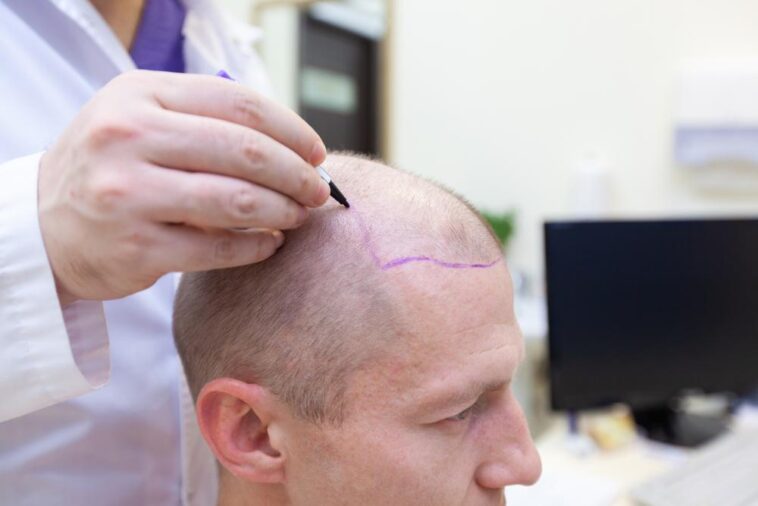Hair transplant surgery, while generally safe and effective, can come with potential side effects. Understanding these side effects and knowing how to avoid them is crucial for a smooth recovery and successful outcome. This blog will explore common side effects associated with Hair Transplants in Islamabad and provide practical tips for minimizing their occurrence.
Common Side Effects:
-
Swelling:
- Swelling is a common side effect, particularly in the forehead and around the eyes, typically occurring within the first few days after surgery.
- Bleeding:
- Minor bleeding is expected immediately after the procedure.
- Scabbing:
- Small scabs form around the transplanted hair follicles as part of the healing process.
- Itching:
- Itching is a common symptom during the healing phase.
- Numbness:
- Numbness in the donor and recipient areas can occur due to nerve disruption during the procedure.
- “Shock Loss”:
- “Shock loss” refers to temporary hair shedding in both the transplanted and surrounding areas.
- Infection:
- Although rare, infections can occur in the donor or recipient areas.
- Folliculitis:
- Folliculitis, or inflammation of the hair follicles, can occur as new hair begins to grow.
- Scarring:
- Scarring is inevitable, but its extent depends on the technique used (FUT or FUE).
- Unnatural Hair Growth:
- Poor surgical technique can result in unnatural hair growth patterns.
How to Avoid Common Side Effects:
-
Choosing a Qualified Surgeon:
- The most crucial step is to select a board-certified and experienced hair transplant surgeon.
- A skilled surgeon will minimize trauma to the scalp, reducing the risk of complications.
- Following Post-Operative Instructions:
- Adhere strictly to your surgeon’s post-operative instructions regarding medication, wound care, and hygiene.
- This includes:
- Taking prescribed medications as directed.
- Gently washing your hair with recommended shampoos.
- Avoiding strenuous activities and sun exposure.
- Managing Swelling:
- Elevate your head while sleeping to reduce swelling.
- Apply cold compresses to the forehead and temples.
- Take prescribed anti-inflammatory medications.
- Preventing Infection:
- Maintain proper hygiene by washing your hands before touching your scalp.
- Apply topical antibiotics or ointments as prescribed by your surgeon.
- Avoid picking at scabs or touching the transplanted area.
- Minimizing Scarring:
- Choose a surgeon experienced in the FUE technique, which leaves minimal scarring.
- Follow your surgeon’s instructions for scar care.
- Addressing Itching:
- Avoid scratching the scalp, as this can dislodge grafts and cause infection.
- Use a mild shampoo to soothe itching.
- Your doctor may also prescribe some topical or oral medications to help with this.
- Managing “Shock Loss”:
- Understand that “shock loss” is a temporary phenomenon and a normal part of the process.
- Be patient and allow the new hair to grow.
- Avoiding Unnatural Hair Growth:
- Choose a surgeon with artistic vision and experience in creating natural hairlines.
- Discuss your desired hairline and expectations with your surgeon during the consultation.
When to Seek Medical Attention:
Contact your surgeon immediately if you experience:
- Excessive bleeding or swelling.
- Signs of infection, such as increased redness, warmth, or pus.
- Severe pain that is not relieved by medication.
- Any unusual or concerning symptoms.
Key Takeaways:
- Hair transplant side effects are generally mild and temporary.
- Choosing a qualified surgeon and following post-operative instructions are crucial for minimizing risks.
- Understanding the recovery process and maintaining realistic expectations will help you navigate the healing journey.
- Communication with your medical professional is key. If you have any concerns, do not hesitate to contact them.
By taking these precautions, you can significantly reduce the risk of complications and enjoy the full benefits of your hair transplant.
This post was created with our nice and easy submission form. Create your post!





